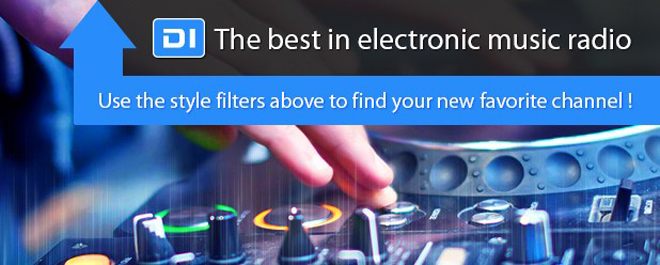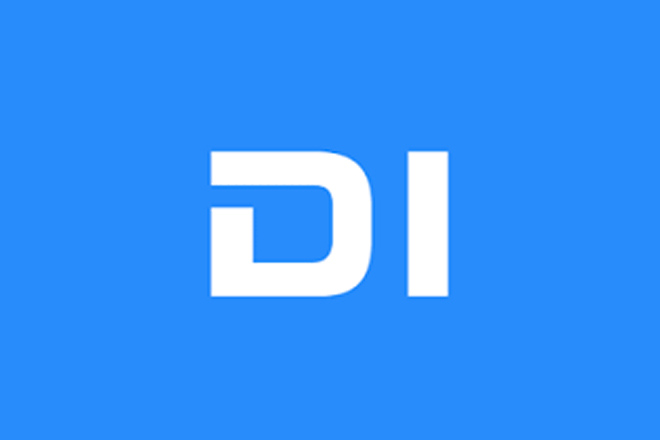Digitally Imported – the streaming radio service geared specifically toward electronic dance music subgenres – has stood out over the years for a handful of distinctive reasons. One, it’s one of the first online radio stations, started by creator Ari Shohat in 1999 from his college dorm room to play trance and Eurodance to the masses.
Two, it remains ahead of the game with curated radio stations for 82 sub-subgenres: Unlike Beatport, which divides its offerings along House, Trance, Electro, and Dubstep lines and stops there, Digitally Imported lets you select from such stations as Big Room, Latin House, Nightcore, Jungle, Underground Techno, EBM, electropop, future synthpop, and modern Eurodance, among many, many more. Listeners can access these channels from the computer or by app, with premium services offering access to exclusive features and better audio quality.
Three, it’s regularly recognized by the electronic dance music as a place for quality music. It received Best Global Radio Station at the 2010 International Dance Music Awards, and won “Best Overall Online Radio Service” at the Fifth Annual RAIN Awards this past September. Along these lines, it attracts top talent, such as sets from DJ Mag No. 1 Hardwell or techno label Drumcode, and has turned into a spot for artists to debut new singles.
Yet, October saw a major announcement from the company. At the Amsterdam Dance Event conference, Digitally Imported revealed it plans to expand its services to encompass the EDM industry’s three biggest platforms – streaming radio, on-demand features, and retail sales – into a single interface. As Digitally Imported has had a business model that’s worked very well for over a decade now, is such a move well advised, or is it more of a case of over expansion, like dance music companies making a public stock offering?
Digitally Imported seems to have its head in the right place. For starters, the company isn’t courting major labels for tracks; rather, its press statement indicates that DI has signed an agreement with nine independent content distributors for non-interactive, interactive, and master rights to offer full integration across its three proposed areas. Those on board include Believe Digital; dig dis!; digedo (a subsidiary of daredo); FUGA; Groove Attack and Rough Trade Distribution (represented by GoodToGo); Label Worx; Paradise Distribution; and Symphonic Distribution.

Content wise, these partnerships would open up 300,000 digital tracks to 3.4 million users, with an estimated 500,000 available by the end of 2015. However, while other services would have more content, DI claims it’ll retain its approach of curated tracks – still offering the “best of the best” to users.
This approach would extend to what listeners will hear on the radio: uninterrupted playback through the platform, alerts and notifications for exclusive shows, customized channels, recommendations, and access to DI Journeys, their original programming series featuring some of the world’s leading DJs.
On-Demand would essentially take DI above being “just” a streaming service, allowing users to skip, stop, and seek through tracks; search through tracks, shows, channels, artists, and labels; keep track of listening history; purchase tracks; get a full view of tracks included in DJ remixes, with the option of playing them back or purchasing; and have customized playlists and social sharing options. The retail aspect would introduce a full ecommerce store allowing users download tracks directly from DI.
Why this approach and why now? Eloy Lopez, who created Beatport and joined DI’s team in 2011, explained in a Billboard interview that, as electronic music has always been fractured along subgenre and listening lines, DI is attempting to bring all aspects together: Nearly all styles and current listening approaches that encompass Soundcloud, Beatport, iTunes, and Spotify. Their new business model set to debut in 2015 aims to prevent navigating between multiple websites to explore, listen to, and buy music.
Of course, “hybrid” services for dance music fans seem to pop up but don’t go anywhere. Revibe.fm aimed to combine streaming radio for dance music listeners with features for DJs to put together playlists, while TheFuture.fm introduced an option for DJs to get heard through streaming radio. Pulselocker tried a similar listen before you buy concept for DJs. And for the fans, DJZ.com attempted to bring together all ways for listening to music and interacting with producers into one interface – but only considered the most mainstream performers.
On the other hand, DI’s history has laid out a firm foundation to work. For one, it already has an established audience. As its press release pointed out, 90 percent of its monthly subscribers renew their subscriptions, 87 percent use it to maintain their own music collections, and 95 percent listen to it at least once a week.
Second, the diverse selection of curated electronic music is DI’s biggest selling point. The biggest pain with Beatport is trying to browse by a specific subgenre or style and being stuck with a glut of tracks to go through. It means that, because of labeling such a large swath of music as “house,” the listener has to wade through everything from the most obscure underground tracks to mainstream stuff to new acid tracks to classic and modern Eurodance. When a listener wants a specific style, DI’s stations essentially take you right there.
Furthermore, its current platform considers nearly all dance music listeners: Underground, mainstream, the gray area in between, downtempo, the fastest hardstyle, instrumental-leaning electropop and synthpop, darkwave, and classic sounds. Yes, there is the outlier who’ll find something to complain about, but the selection presents one of the most comprehensive, easily-navigable interfaces for finding dance music. On-demand and purchasing tracks would simply enhance what already works well.
On the flipside of this, Soundcloud, Beatport, and Spotify already have firm roots in the dance music community. DI’s expansion would benefit those already using the platform, but would it siphon off users who currently go to Beatport or listen to new tracks on Spotify (not to mention be included in the press statements that link to these two platforms for a new track)? Not likely. In this regards, DI needs to make a case for why Beatport users should start purchasing tracks from its platform that’s been known as a streaming service for the past 15 years.
Unlike other new online streaming or “under one roof” concepts, history and a steady pool of users indicate that DI’s expansion plan isn’t that farfetched. But for the users already buying their music elsewhere, there’s not a strong enough case for using this new platform.
If you’ve been a regular DI listener, would you start buying your tracks from its platform, once it rolls out next year, or would you continue to stick with Beatport and iTunes?




